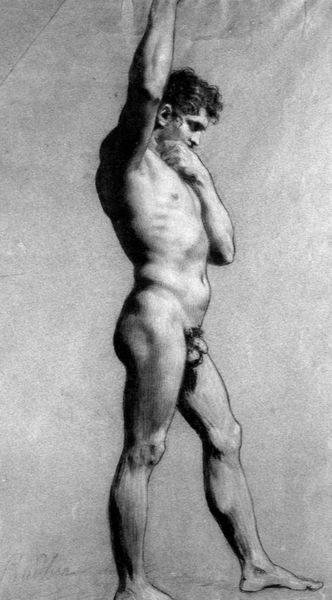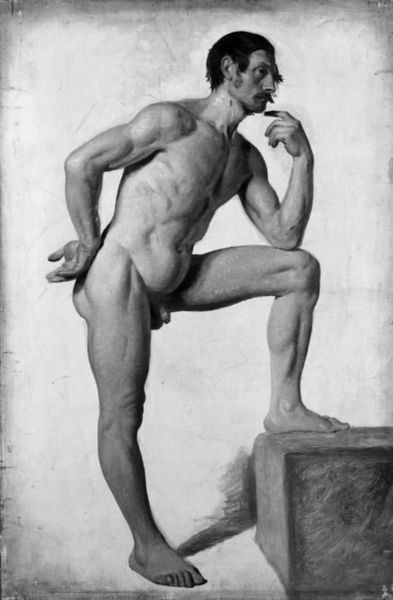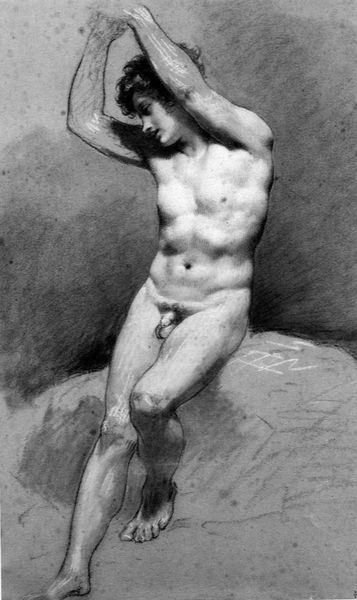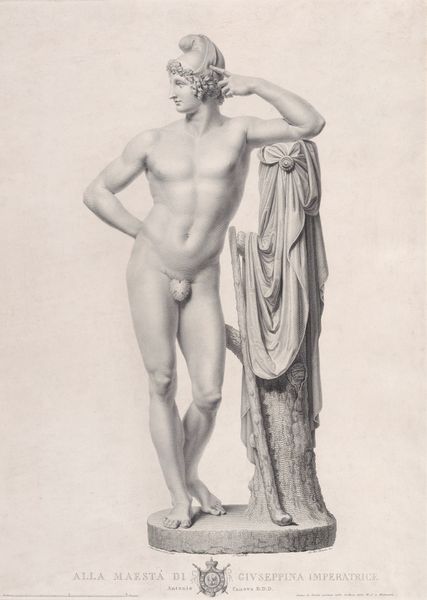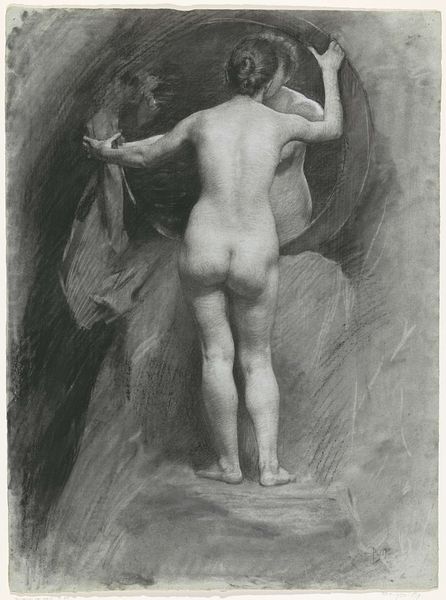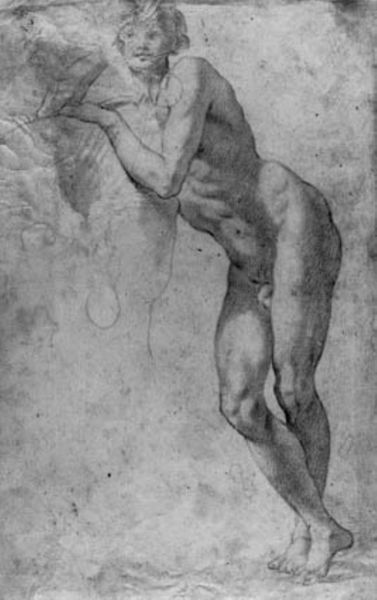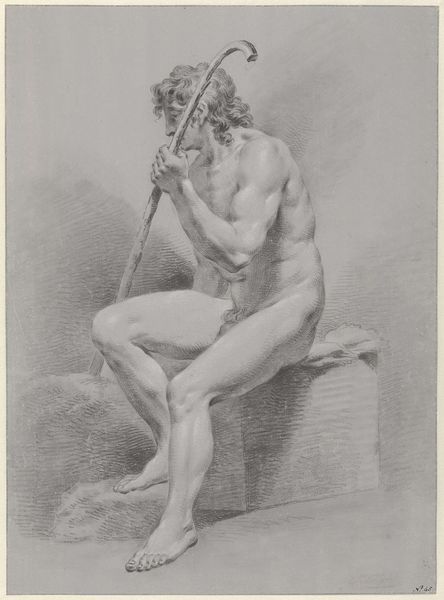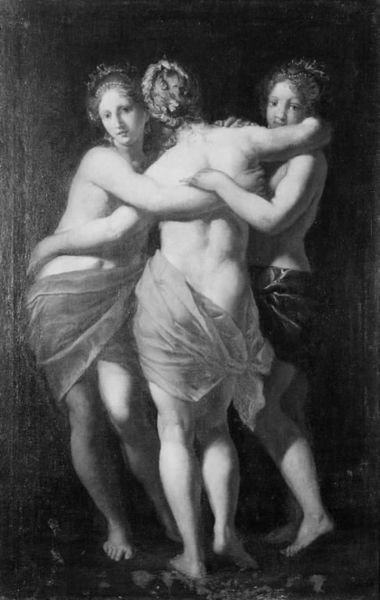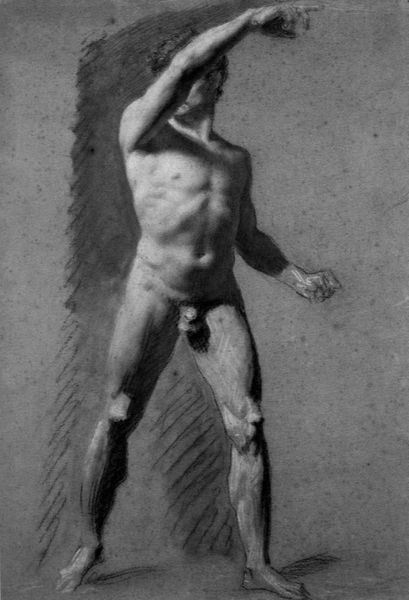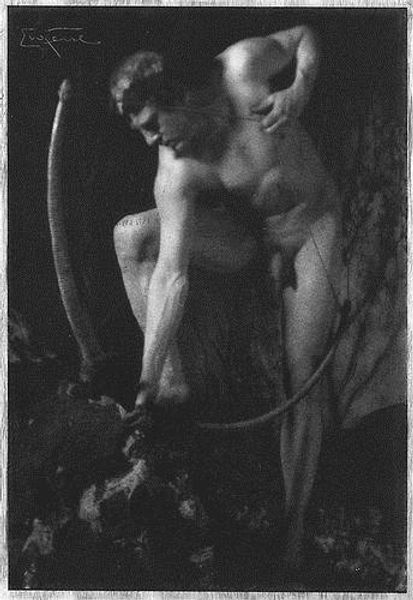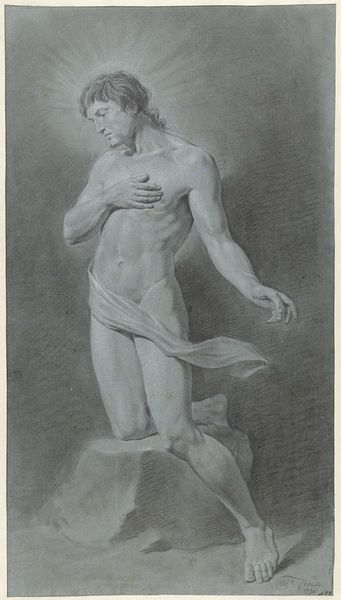
painting, paper, pencil
#
portrait
#
neoclacissism
#
portrait
#
painting
#
classical-realism
#
figuration
#
paper
#
classicism
#
black and white
#
pencil
#
history-painting
#
academic-art
#
nude
Dimensions: 60 cm (height) x 47.5 cm (width) (Netto)
Curator: Here we have Constantin Hansen's "Apollo with his Lyre," crafted in 1846, now residing here at the SMK. It immediately strikes me with its almost ghostly rendering in grayscale. A powerful god portrayed so softly... it’s almost melancholic. Editor: Interesting you say that. My initial reaction is much more in line with what I'd expect – an ode to idealized masculinity and western aesthetics. It makes me think about what visual codes were being reinforced in mid-19th century artistic circles. Apollo, here, feels almost like a political statement. Curator: Absolutely. Hansen's work can't be separated from the strong currents of Neoclassicism that idealized the human form within an explicit aesthetic regime that celebrated reason and the revival of classical antiquity. Editor: But I also think we have to push that a little, don't we? Why the choice to render a scene traditionally imbued with vibrant colours using only a monochromatic scale? This feels intentional. It is, after all, a pencil on paper medium, quite a detour from history paintings in oils from this period. Curator: I would add, who gets to be immortalized in painting? This, seemingly neutral rendering of a white god with its sharp classical idealism hides so much! In our contemporary moment, we need to view those portrayals of supposed artistic beauty and perfection critically! Editor: Yes, that tension between this apparent neutrality, and the implied historical and political frameworks is critical to understand and evaluate these representations today! What do we take from it now that maybe audiences from 1846 could not consider. Curator: Precisely! Looking at the piece through a lens of identity politics and institutional power highlights just how carefully crafted these aesthetic regimes actually are, even when they pretend not to be regimes at all. Editor: Thinking about it, even something as subtle as a painting's medium can drastically impact our understanding. It forces a new level of attention. Thanks to it, maybe more than a nostalgic nod to antiquity, it provides us a rich dialogue between classical and contemporary theories. Curator: I appreciate the shift in thinking – it's a reminder to actively dissect narratives, even seemingly simple pencil renderings, and consider whose stories get told and how. Editor: I concur. This piece isn’t just a pretty drawing. It reflects complex socio-political landscapes of the era and forces questions of interpretation in our present.
Comments
No comments
Be the first to comment and join the conversation on the ultimate creative platform.

